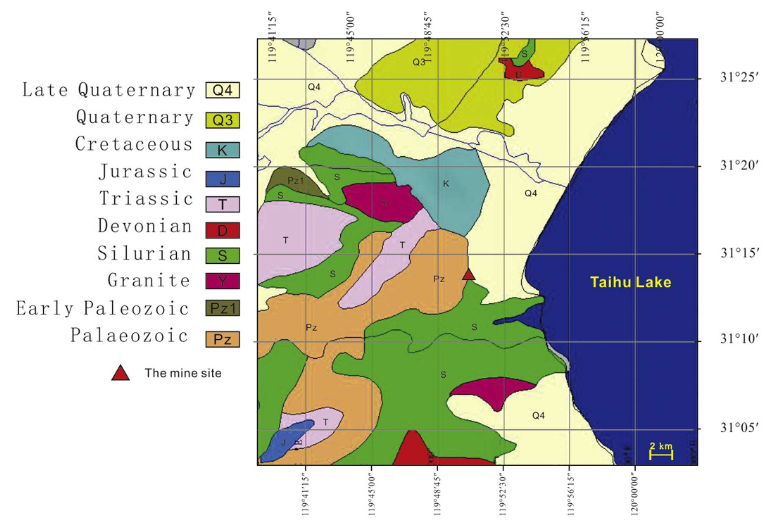Yixing Zisha Ore
Listen to the Editorial Conversation for this chapter:
The Geology and Lithology of Yixing
Yixing sits on the edge of Lake Tai (太湖), the remnants of an ancient aquatic basin, formerly inundated by the East China Sea; thousands of years later, the Yangzi River[1] carried and dispersed rich sediment[2] into the late Holocene[3] era depression, forming a fresh water lake. The ore deposits in Yixing, unlike many of the ceramic centers in China, were formed within an early aquatic depositional environment, where layers of sediment varied in composition as the Yangzi River changed its course and carved new channels, both upstream and in the delta; these variations in sedimentation formed deposits of different compositions which give rise to the various sub-types of Zisha ore[4].

Zisha is thus a catch-all term for the many sub-types of ore and their resulting clay, all of which are formed from clastic[5] sedimentary[6] rock, composed primarily of Devonian period[7] siltstone[8] and mudstone[9], eroded and weathered in shallow lakes. Lacustrine[10] deposits are generally highly layered, with earlier sedimentary flow covered by progressive layers from different regions and mineral compositions. The layers of zisha ore are thus notably different from each other in their constituent components and resulting properties; different sub-types of zisha ore are found stratified in different layers and locations throughout the Yixing region.
Mineralogical Components and Properties of Zisha Ore
Zisha ore is composed of consistent major-component minerals, each of which contains an overlapping set of compounds[11]. While the mineral-components contain similar compounds, the compounds themselves vary in physical structure[12] with different resulting properties. Many of the differences between sub-types of zisha clays stem from minor changes in the major-components and major changes in the minor-component impurities[13].
This page is for paying subscribers only
Subscribe NowAlready have an account? Log in